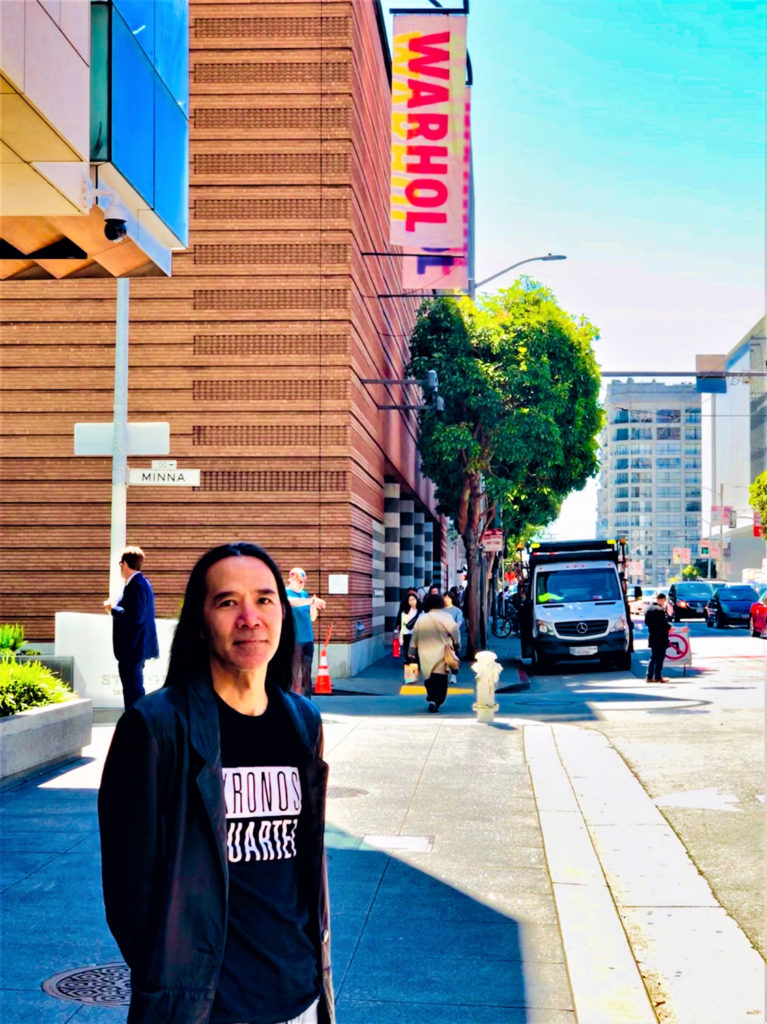
Richard Polsky: I Sold Andy Warhol (Too Soon). Other Press trade paperback (2011). Design: Carin Goldberg.
Back in 2005, I read a book called I Bought Andy Warhol,1 a memoir by art dealer Richard Polsky, who, with his wife Lia, owned a San Francisco gallery called Acme Art. Early in 1987, they mounted a show of Warhol paintings, and on February 22, it was hung but had not yet opened. On that day, they were in Sacramento to buy a small Self-Portrait from 1967 to round out the show. When they got back home to SF with the piece, there were over a dozen messages on their answering machine saying Warhol had died.
Soon after the show closed, Polsky set aside $100,000 to purchase a Warhol not to resell, but for his personal collection. I Bought Andy Warhol is about his search for that painting. It’s a highly entertaining read, very chatty and funny, with a lot of anecdotes about the strange and often ridiculous world of art. At the end of the book, he, now divorced, buys a 12” square green “Fright Wig,” from the 1986 series of self-portraits that I consider to be among Warhol’s most powerful work. Polsky really seems to love the piece, which took him twelve years to acquire. I was happy for him – he bought a great painting and only used half the money he had earmarked to spend.
In 2011, I found out Polsky had a newer book titled I Sold Andy Warhol (Too Soon).2 I was naturally disappointed that, after his talk about the “Fright Wig” being his “ultimate Warhol,” he decided to sell it. Nevertheless, I was intrigued and read the book. Apparently Rachael, his new wife,3 liked to spend a lot of money, and asked, “What would you rather look at, your painting or me?” He sold the painting to placate her. I’m sure she was not without certain charms, but I don’t think I’m going out on a limb by saying he made the wrong choice. The Christie’s auction at which Polsky sold the piece takes place at the beginning of the book; by page 29, he and Rachael are divorced.
Most of what follows is about how prices for blue-chip art escalated at an unprecedented rate in the late 1980s. It is entertaining, but while I Bought… is about art, I Sold… is all about money. It’s no coincidence that while the first book has the Warhol Self-Portrait on the cover, the second cover features the etching of George Washington from the dollar bill. Greed, and maybe fear, made him sell the painting. He says he immediately experienced seller’s remorse and that he had violated the cardinal rule of art dealing: never get emotionally attached to the inventory. He seems to have forgotten the piece wasn’t “inventory,” it was part of his collection, “part of [his] soul.” He sold it.
1 The title is a pun on I Shot Andy Warhol, a 1996 film which I had the distinct displeasure of seeing at a sneak preview with what seemed like an audience/mob of 800 militant lesbians rooting for wackjob Valerie Solanis, who they thought was making some sort of feminist statement by shooting Warhol and art critic Mario Amaya. Being in that theater was truly one of the most unsettling experiences of my life – I have no recollection whatsoever of the movie.
2 It was originally published in 2009.
3 I Bought Andy Warhol is dedicated to her.




